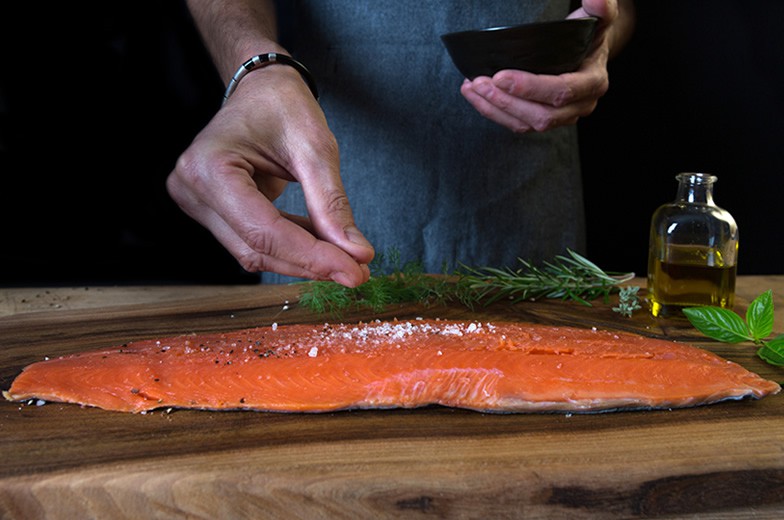White salmon pink salmon
We can debate about salmon talking about flavour, smoking, healthiness, if it is better wild or farmed. With Prof. Ballarini we also talked about colour.

Is the use of certain colour additives found in salmon dangerous to the consumer's health?
This is one of the questions raised by EFSA (European Food Safety Authority) to the scientific committee for food safety of which Prof. Giovanni Ballarini is a member.
So while in the early 2000's the European Economic Community established committees to legislate in various fields, Prof. Ballarini tasted salmon for the first time. A pleasant but demanding experience, as he had to find answers for his studies.
At the time of the study two different colour additives were used to make salmon - otherwise whitish - of the typical pink colour, one of vegetable origin and one of animal origin. However, it was found that astaxanthin and zeaxanthin, two carotenoids naturally present in some algae, if used as artificial additives and consumed in large quantities, in the long run could cause some vision problems. It was understood in any case that below certain values there was no danger for public health.
At this point, though, the scientific nature of the question began to take on a dull tone and the dilemma to take on an environmental, social, and later ethical turn. People weren't sure how to tell the difference between salmon fed with crustaceans responsible for its pink colour and salmon that had been given colour additives. By this time, giving clear-cut answers had become increasingly difficult.
We at Upstream preferred to go against the flow, where there was no need to ask questions.
We went looking for places where salmon grow without the use of antibiotics, GMOs and colour additives, where the line between wild and farmed is not drawn. In the Faeroe archipelago, salmon farms are extensive, the constantly moving waters ensure an aireted environment for the salmon to grow, and here aquaculture legislation is very strict. Because of these reasons we chose to go there, where there is the best and healthiest salmon in the world.
"When we fillet Upstream salmon it has a pink colour, but a very light one. It's the marinating that changes the colour, through the reaction of the salt and not because of any additives." - Claudio Cerati
We had a chat with Prof. Giovanni Ballarini about it. His words always have another tone: listen to the podcast "Here are the good reasons to choose Upstream salmon".
